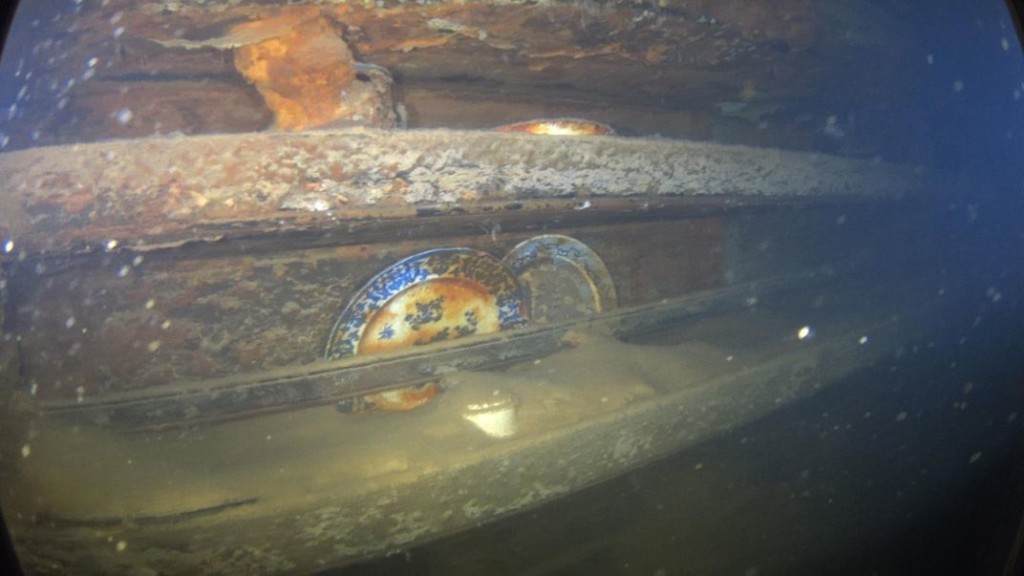
Plates and other artifacts on shelves next to a mess table where a group of lower ranking crew members would have taken their meals. (Parks Canada, Underwater Archaeology Team)
Below deck, glass bottles sit upright in storage rooms, and stacks of intact ceramic plates are neatly arranged on shelves. Rusted firearms hang on the walls. Wash basins and chamber pots remain undisturbed in officers’ rooms. The captain’s desk, with its drawers tightly shut, collects layers of fine marine silt.
These eerie scenes came into view for the first time as underwater archaeologists finally got an extensive look inside the HMS Terror, one of two ships that disappeared in northern Canada during the doomed Franklin expedition of the 1840s.
…“In a way, Franklin was the Amelia Earhart of his time,” says James Delgado, a maritime archaeologist, senior vice president of SEARCH and author of the book Across the Top of the World: The Quest for the Northwest Passage. “They were the best trained, best equipped, and had all the modern conveniences only to then go silent and to have the story slowly trickle out in a heartbreaking way.”
Read the rest of the article by Megan Gannon on the Smithsonian Magazine website.